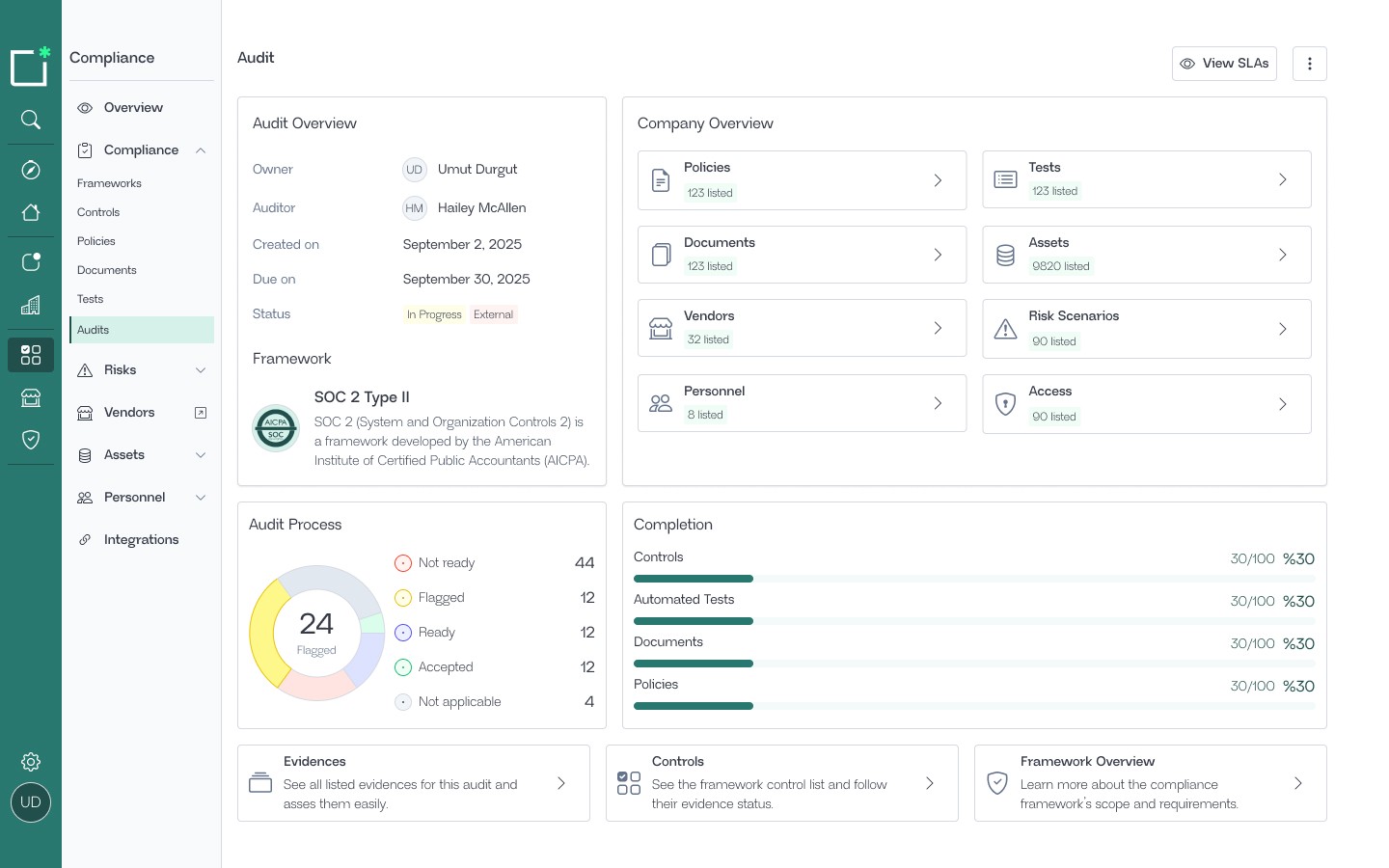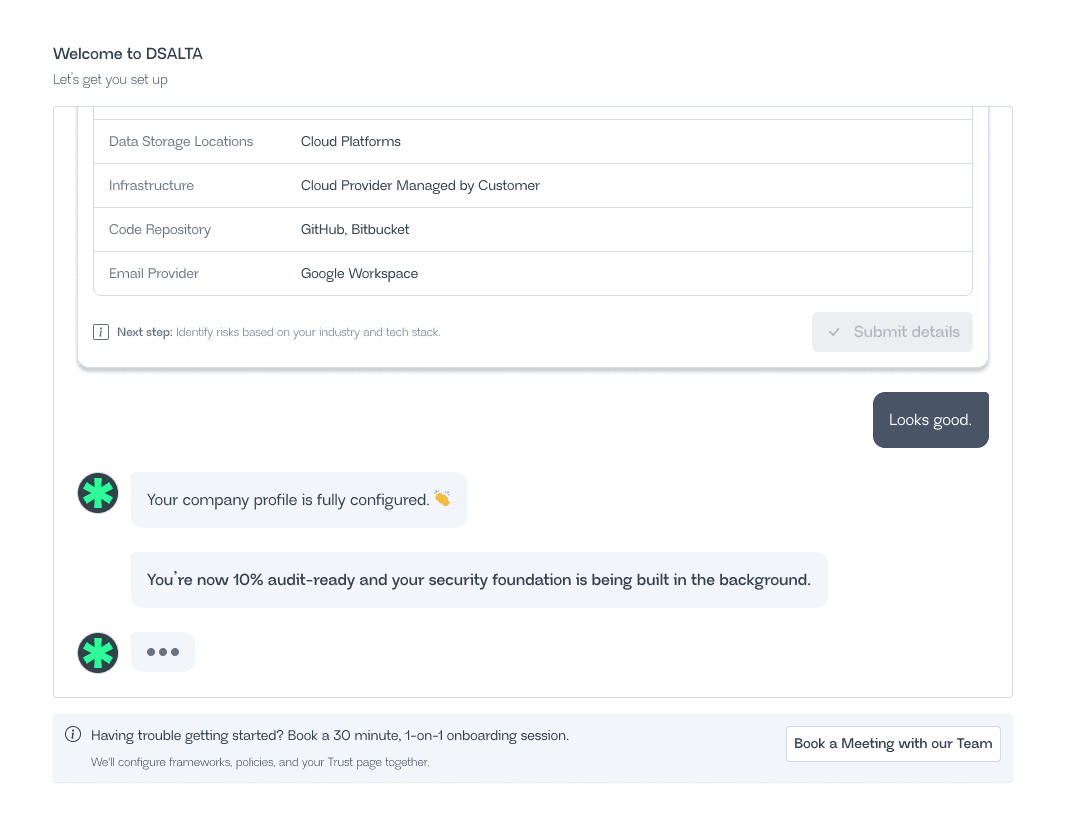DSALTA Blog
From Zero to Audit-Ready: Using AI to Shorten Compliance Cycles

Written by
Ogulcan Ozdemir
|
Published on
Nov 7, 2025
What Makes Audit Readiness So Time-Consuming?
Preparing for audits has always been one of the most time-intensive parts of compliance. Teams spend weeks locating policies, collecting screenshots, and matching controls across departments. The biggest challenge isn’t the audit itself—it’s the constant search for evidence scattered across multiple systems.
Common Pain Points in Audit Preparation

Fragmented documentation stored in siloed tools.
Duplicated controls repeated across overlapping standards.
Manual validation is done just before audit deadlines.
Industry surveys show that more than half of compliance teams still rely on spreadsheets for audit preparation, spending 200+ hours per cycle gathering and verifying evidence. The outcome? Slower readiness, higher costs, and audit fatigue.
How Can AI Help Teams Reach Compliance Faster?

AI brings speed and structure to compliance. By automating evidence collection, mapping controls, and identifying risks early, organizations can reduce months of preparation to days.
Automated evidence collection – AI agents connect to existing systems and pull verified proof continuously.
Smart control mapping – Machine learning identifies overlaps across standards, reducing repeated work (see framework checklists).
Pre-built audit checklists – Teams receive a tailored readiness plan with pre-filled evidence requirements.
Risk prediction – AI models flag potential control failures or missing data before audits begin.
Continuous validation – Systems track compliance status in real time, ensuring readiness never lapses (powered by Compliance Management).
Organizations adopting AI-driven compliance tools typically shorten their audit cycles by 50–70%, while improving evidence accuracy and reducing human error.
What Does an AI-Powered Compliance Workflow Look Like?
Step 1 – Centralize Controls and Policies
AI begins by consolidating every policy, test, and control into one unified environment. This eliminates redundancy and ensures traceability through AI auditing.
Step 2 – Automate Evidence Collection
Instead of manually uploading screenshots or logs, AI integrations collect and tag evidence directly from cloud services, HR systems, and ticketing tools, ensuring audit readiness remains continuous.
Step 3 – Generate Dynamic Checklists
Based on your organizational structure and compliance scope, AI produces a personalized checklist—updated instantly as new risks appear (use the SOC 2 or ISO 27001 readiness templates as examples).
Step 4 – Maintain Continuous Monitoring
AI agents review configurations daily and alert teams to drift, expired evidence, or missing validations. This keeps compliance current between audits and aligns with Trust Management transparency.
This continuous cycle turns audit preparation into an always-on process rather than a yearly scramble.
Case Study: Reaching Audit Readiness in Two Weeks
A mid-sized SaaS company needed to achieve audit readiness rapidly to meet client requirements. By deploying AI-based compliance automation, the team:
Centralized 100+ policies and controls in a single workspace.
Connected 10 internal systems for real-time evidence collection.
Automated 90% of documentation tasks.
Completed readiness checks within 14 days, compared to the usual six weeks.
This transformation saved the company hundreds of labor hours and established a repeatable model for future audits.
Why AI-Driven Compliance Matters in 2025
The shift toward automation reflects a broader trend: compliance is becoming continuous. Rather than reacting to audit requests, organizations are building systems that self-validate, detect risks, and provide real-time assurance to customers and stakeholders.
Faster audit readiness through predictive analytics and proactive alerting.
Reduced manual overhead with automated document handling and integrations.
Improved transparency through centralized dashboards within Compliance Management.
Higher resilience against compliance drift and data inaccuracy, supported by the Vendor Risk Transparency Whitepaper.
Forward-thinking compliance teams now treat automation as essential infrastructure, not an optional upgrade.
The Takeaway
AI is transforming compliance from a reactive obligation into a proactive, intelligent workflow. By centralizing evidence, predicting risks, and maintaining continuous assurance, organizations can move from zero to audit-ready in record time. Learn more about AI-driven compliance through DSALTA’s Risk Assessment Reports and framework checklists.





